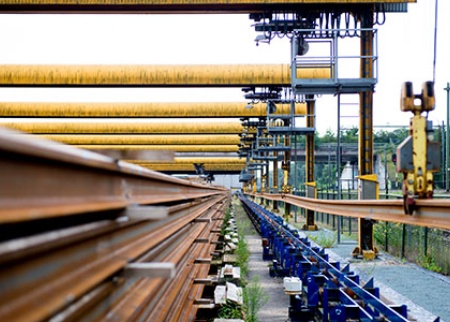The HS-Line between Amsterdam and Paris is in many ways a unique railway. The trains reach a maximum speed of 300 km/h on these tracks. A large part of this railway consists of a slab track, also called Rheda concrete track. The HS-line follows a shorter route than the main line from North to South, and, in addition, has fewer stopping points. This results in shorter traveling time. However, the HS-line also requires railway maintenance in order to preserve it in the best and safest way possible. So what is the best approach?
One of the solutions was found in the application of ultra-long-welded rails. In our Rail Service Centre we flash butt welded 3*120 meter rails and created 360 meter long rails. The advantage is that longer rails do not require a great deal of welding activities in difficult places in the tracks. This saves the contractor a lot of time. In addition, these flash butt welds are of high quality. An understandable choice for manager Infraspeed and contractor BAM Rail in regards to this viaduct on the HS-line.
We delivered a total of 2.482 meters of new rails with our Robel train and unloaded them straight into the tracks, both left and right. And the 2.482 meters of old rails were loaded immediately and taken back for recycling.
